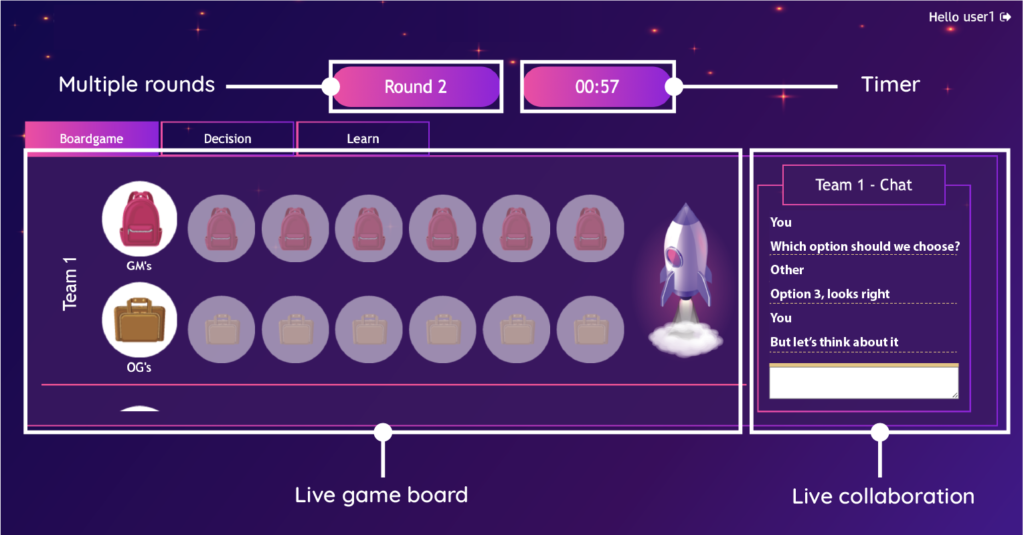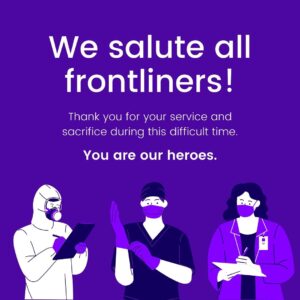Spotlight on Learner-Learner Interactivity
May 10, 2021 2021-05-13 5:58Spotlight on Learner-Learner Interactivity
Learner’s interaction in learning environments can be broadly categorized under the following types:
- Learner-Content
- Learner-SME/Facilitator
- Learner-Learner
Virtual, self-paced learning mostly utilizes learner to content interaction modalities. These interactions range from quizzes, case studies, and scenarios to complex games and simulations. Typical live, virtual, synchronous learning on the other hand, is driven largely through learner to expert or facilitator interactions. Typical virtual conferencing platforms are built for and around a facilitator/presenter who runs a sequence of slides, engages the audience through polls, or takes questions through Q&A tools.
Spotlight on Learner-Learner Interactions

Learners have rich set of experiences, stories, and wisdom that any learning environment must leverage. In addition, learners like to discuss, share, argue, debate, reflect, and construct their own meaning. Most live, virtual synchronous learning events narrow this interaction down to the Q&A session (which too is mostly one-sided), timed breakout room discussions, or to learning summary and reflection sessions.
However, there is strong evidence to support the claim that collaborative interaction with peer learners enhances learning engagement and learner satisfaction. This can both have an ultimate impact on learner performance and learning transfer.
“ONLINE COLLABORATION, IN THE FORM OF PEER WORK GROUPS AND LEARNING COMMUNITIES, INCREASES ENGAGEMENT IN THE LEARNING PROCESS” (MOLLER, ET AL., IN PRESS)
What if we could design virtual learning environments that maximize learner-to-learner interactions and bring those interactions to the center stage?
A clutch of fantastic tools like Miro, Google Jamboard, Docs, Mural, and others provide feature and mechanics to support live, learner-to-learner interaction and collaboration. These tools offer a whiteboard style interface where learners can work together, collaborate, problem-solve, and create digital artefacts.
Games offer a dynamic environment for problem-solving and collaboration. GamifyEasy is built keeping in mind the instructional potential of live learner-to-learner interactions within games and gamified content.
Learner-Learner Interaction in GamifyEasy
The first thing that learners experience when they log in to a GamifyEasy session is that they need to work in a team. Often team members are drafted from across the organization and may constitute colleagues they may have never interacted with. This setup creates an environment of peer interaction and group decision-making from the word Go.
Most games have multiple rounds and decisions to be taken in each round. These decisions can include allocating resources, choosing from available options, selecting a response or simply answering questions. Learner-to-learner interaction is at the center of all these decision-making processes. Team members use the chat function to collaborate, decide, and act or use the breakout room feature of the virtual collaboration tool.
The live game board interface acts both as a scoreboard and a single view to show relative progress of the teams. The game board keeps the action alive as learners motivate each other and ensure all team members are participating, thinking, and contributing. As the game proceeds, the chat rooms start buzzing with activity, questions, counter questions, resolutions, sadness, and ecstasy of losing and winning rounds.
As learning increasingly becomes virtual, we believe that significant advances will be made in enabling and supporting learner-to-learner interactions and collaboration. Serious games and gamified learning environments like GamifyEasy will enable facilitators, learning designers, and educators to design rich learner-to-learner experiences.
A GamifyEasy Gameboard

Research
- Importance of learner-to-learner interaction in distance education: https://www.researchgate.net/publication/228849911_Importance_of_learner-learner_interaction_in_distance_education
- Examining the effects of learner-to-learner interactions on satisfaction and learning in an online undergraduate course: https://dl.acm.org/doi/10.1016/j.compedu.2017.06.010
- Effects of Different Types of Interaction on Learning Achievement, Satisfaction, and Participation in Web-Based Instruction: http://anitacrawley.net/Resources/Articles/Effects%20of%20Different%20Types%20of%20Interaction%20on%20Learning.pdf
- Effects of learner-to-learner interactions on social presence, achievement, and satisfaction: https://link.springer.com/article/10.1007%2Fs12528-017-9157-x
- Online learning: 6 types of interactions at play: https://knowledgeone.ca/online-learning-6-types-of-interactions-at-play/
- The 11 best online whiteboards: https://zapier.com/blog/best-online-whiteboard/



